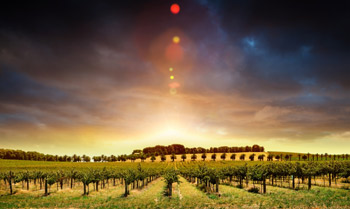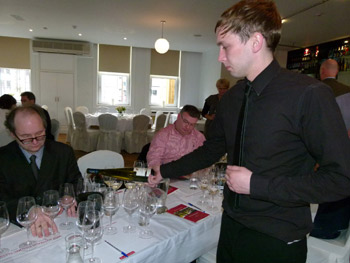Shelflife Tasting: Riesling

Riesling is one of the great classic varieties of Europe and yet nowadays, if Irish consumers drink riesling, it’s more likely to be Australian rather than one from Alsace, Germany or Austria. Helen Coburn reports
15 June 2012

Australian riesling is generally dry, which is how most irish drinkers like it, and is usually very keenly priced
In the mass market, riesling is afflicted by history. Consumers still remember the great Austrian antifreeze scandal, without realising that, as a result, Austrian wines are now amongst the best regulated in the world. German riesling is too often confused with the sweet liebfraumilch which people of a certain age drank in their youth. Alsace riesling is affected by its traditional labelling customs which generally don’t inform consumers whether a wine is dry, off dry or sweet.
Australian riesling producers, in contrast, have succeeded in creating consumer awareness of their great riesling areas, particularly Clare and Eden valleys. The wine is generally dry, which is how most Irish drinkers like it, and usually very keenly priced, compared with European versions. It comes in a variety of styles, from the racy, cool climate rieslings of western Australia, to the firm, green fruit of Eden Valley, and the riper apple and lemon flavours of the wines of Clare. Countries such as Chile and New Zealand have also joined the fray, with New Zealand producing elegant and zesty examples, and Chile offering a wide range, generally at excellent value to the consumer.

Pouring at the Australian riesling tasting
Riesling is a good food wine. Best matches are pork, veal, sausages, smoked foods, lightly spiced Asian dishes, light terrines and vegetarian dishes which aren’t overloaded with tomatoes. Some cheeses also go well with Riesling – experiment with your favourites and see what works.
Recently, John McDonnell of Wines of Australia and Tim Adams, a long time producer of Clare rieslings, headed up a special riesling tasting which included not just Australian wines but a couple from Europe as well, allowing tasters to make some interesting comparisons. Prices are retail.
Peter Lehmann Art Series Barossa 2011 (Comans €8.99). Who says all riesling is expensive? This little bargain has gentle, flowery aromas, fresh granny smith apple flavours and decent finish for the price.
Wirra Wirra Lost Watch Adelaide Hills 2010 (€21.99). Good food wine so a fine dinner party choice. Zesty acidity with Bramley apple flavours and decent weight and length. Perfect for pork.
Thorn Clarke Mt Crawford Eden Valley 2011 (Febvre €18). Nicely balanced acidity and alcohol, with firm green fruit and a hint of minerality. Good weight and finish ensures that it delivers on price.
Pewsey Vale Eden Valley 2010 (Cassidy €17). Nose has a hint of diesel but there are flowery notes too. Flavours are of green apple and grapefruit. Finish isn’t huge but it’s an elegant wine – a perfect aperitif and great with summer salads.
Peter Lehmann Wigan Eden Valley 2003 (Comans €19.99). This is, in fact, a bargain at its price, provided you can lay your hands on some. A lemon and nut nose leads to slightly creamy citrus flavours with slightly spicy dried lemon notes. Delicious stuff, drinking well now.
Tim Adams Clare Valley 2011 (Tesco €14.95). Floral notes and hints of diesel on the nose with tasty green fruit flavours and perfectly balancing acidity.
Petaluma Hanlin Hill Clare Valley 2006 (Gilbeys €19.99). What you’d call an all round riesling with nose of lemon and minerals and nicely rounded green apple flavours. Good with pork, veal and chicken.
Non Aussie rieslings
Domdechant Werner’sches Weingut Spatlaese Troken Hockheim am Main Germany 2004 (Febvre €25). Some people found this a bit flat but I took a splash from a second bottle and found it made an intriguingly exotic change from the Australians. Quite floral and lush, with soft acidity and pleasantly dry finish, it went very well with a light fish stew. A bit hard to sell, perhaps, and price could be an issue.
Domaines Schlumberger Saering Grand Cru Alsace 2006 (Tindal €25.50). Not an especially aromatic nose, quite ripe green fruit on the palate with a hint of white nuts on the palate. A little expensive for what you get.



 Print
Print








Fans 0
Followers